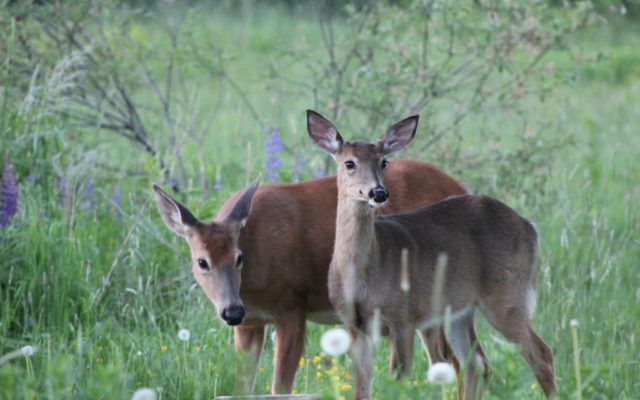
This year’s deer harvest was the highest in 18 years
By John Holyoke, Bangor Daily News Outdoors Editor
In true Maine fashion, it’s only appropriate to begin this column with a favorite outdoorsy question: Did you get your deer?
If you’re like me, you didn’t. Again.
But if you’re like thousands of other Mainers, the answer is, “Heck, yes, I did. And it tastes great!”
In all, an unofficial total of 33,157 deer were tagged by the state’s hunters during seasons that allowed the use of bows, crossbows, regular firearms and muzzleloaders this year. That’s the highest total in 18 years, and reflects positively on the status of the state’s deer herd, as well as the efforts of its hunters during a pandemic.
This year’s total is the highest since 38,153 deer were tagged back in 2002. Incidentally, that’s the first year I went deer hunting.
(For the record, I didn’t get a deer that year, either, even though it seemed like everybody else did. That might be a recurring theme).
Nathan Bieber, the deer biologist for the Maine Department of Inland Fisheries and Wildlife, said there may be a slight adjustment of the numbers after any possible redundancies and errors are eliminated from the data, but the total won’t change much.
“Of course, we had a record number of any-deer permits this year, which helped facilitate that [high] number,” Bieber said. “Overall, though, I think it was just a very successful season. The last I had heard, the sales of [hunting] licenses were up 7 percent or so, so a lot of people had the ability to hunt.”
Bieber said that a deer hunter survey that measures how much time afield each hunter spends during the season showed that more people were in the woods, too.
“While it looked like hunters were spending the same amount of time per day in the field, they were hunting almost another day, on average, per hunter, than last year,” Bieber said. “So it looks like there were a lot of people who could hunt, and they were spending a little more time in the field than they usually do.”
Bieber hasn’t received the sex and age breakdown of the harvest, which will allow him to determine if the number of female deer taken by hunters reached departmental goals, but expects that data in two or three weeks. The state issues any-deer permits, which allow hunters to target non-antlered deer if they choose. This year, a record 109,890 any-deer permits were issued.
Bieber said the data that is available contains at least one stunning statistic, though.
“One thing I thought was pretty surprising was the total archery kill this year was close to 3,200 deer. Over the last decade it’s been close to 2,000, and we never got above 2,200 or so,” Bieber said.”I think part of [the reason] was that people were able to use crossbows this year [during archery seasons for the first time].”
Crossbow hunters accounted for 445 deer killed, Bieber said.
In the woods where I hunt, activity seemed about on par with recent years, and far below what it was before landowners limited vehicle access to save wear-and-tear on the gravel roads. In other places, with more hunters putting in more effort, that wasn’t likely the case.
But Bieber said the DIF&W wants to point out just how successful the season was, safety-wise.
“We did have a lot of people afield and a lot of success, but we had very few firearms incidents,” Bieber said. “I think we had two people who had gun injuries, and they were both self-inflicted. So, even when we put a lot of people in the field, hunting is still a very safe sport.”
Now, you may be wondering: “Is the state deer biologist a deer hunter?”
Yes, he is.
And did he get his deer?
“I hunted all of bow season and gun season at this new property, and I didn’t see a deer,” Bieber said with a chuckle. “I have cameras up, and I saw a lot of deer, but all at night.”
Welcome to my world, Nathan. There’s always next year.
John Holyoke can be reached at jholyoke@bangordailynews.com or 207-990-8214. Follow him on Twitter: @JohnHolyoke. His first book, “Evergreens,” a collection of his favorite BDN columns and features, is published by Islandport Press and is available wherever books are sold.